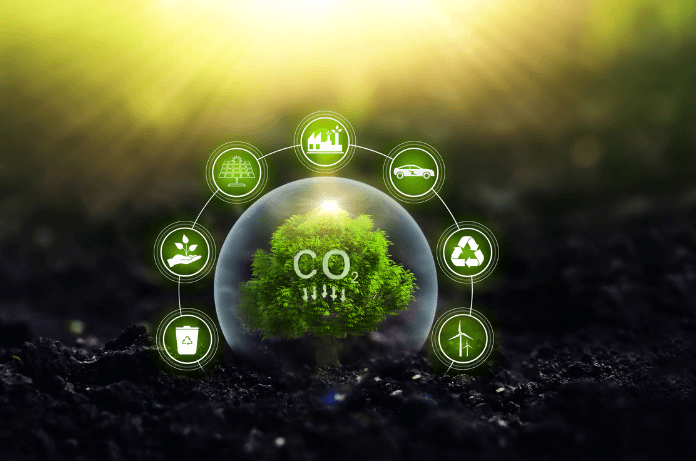In a groundbreaking move for Save Earth action, Google has signed its first carbon project agreement in India with Varaha. This collaboration aims to make a significant impact by removing 100,000 tons of carbon dioxide from the atmosphere using biochar and a form of horticulture charcoal also known as “black gold” for its soil-enriching properties.
This deal stands as the largest biochar carbon removal project ever recorded and sets a new global benchmark. But what makes this partnership unique? And why is biochar being hailed as a game-changer in the fight against climate change? Let’s break it down.
What is Biochar and Why Is It Important?
Biochar is a type of charcoal created by heating organic matter (like crop residue or plant waste) in a low-oxygen environment, a process called pyrolysis. It not only helps remove carbon from the atmosphere but also improves soil fertility when added to the ground.
Think of it this way: instead of burning crop residue and releasing harmful gases into the air, biochar locks carbon into the soil, preventing it from escaping for up to 2,500 years. This makes it a highly effective long-term carbon removal solution.
Varaha, a New Delhi-based start-up uses biochar made from an invasive plant species called Prosopis Juliflora, which has overtaken grazing lands in Gujarat, harming plant biodiversity and affecting cattle pastures. The company plans to remove this invasive species and restore the natural grasslands while turning the biomass into biochar.
How Biochar is Made: Two Methods Explained
There are two primary ways to produce biochar:
- Artisanal Biochar Production:
- This method is community-driven and involves farmers burning crop residue in conical flasks.
- No machinery is used, and it’s a small-scale, local approach.
- Industrial Biochar Production:
- This involves large reactors processing 50-60 tons of biomass daily.
- It’s a more scalable, high-efficiency method suitable for large carbon removal projects.
For this project, Varaha will use an industrial pyrolysis facility in Gujarat, capable of handling biomass at scale.
Google’s Commitment to Carbon Removal
In this agreement, Google has committed to purchasing 100,000 tons of carbon dioxide removal credits from Varaha by 2030. These credits will be generated through Varaha’s biochar production process.
What are carbon credits?
Carbon credits are certificates representing the removal of 1 ton of carbon dioxide from the atmosphere. Companies can buy these credits to offset their carbon emissions.
Why it matters:
Google emitted 14.3 million tons of CO₂ equivalent gases in 2023, a 13% rise from the previous year, driven by expanding AI technologies. Despite its increasing emissions, Google has set a bold goal of becoming net zero across all operations and supply chains by 2030.
Randy Spock, Google’s Carbon Removal Lead, stated: “Biochar is a promising method of removing carbon since it can be scaled globally with current technology, with favorable side effects for soil health.”
The Science Behind Biochar’s Carbon Removal
Varaha has taken extensive measures to ensure its biochar production meets the highest standards for carbon permanence. The goal is to create biochar that locks carbon in the soil for 1,600 years on average.
Key steps Varaha follows:
- Optimal Feedstocks: Experimented with various biomass types for better carbon capture.
- Advanced Monitoring: A digital monitoring system tracks biomass availability using remote sensing.
- Smartphone App: The app records geotagged, time-stamped photos for field applications of biochar and biomass excavation.
Once biochar is produced, a third-party auditor will review the data and submit reports to Puro. Earth, a recognized carbon credit registry.
Varaha’s Growing Impact on Carbon Projects
Founded in New Delhi, Varaha has become a major player in the carbon removal space, managing 14 tech-driven carbon projects across India, Nepal, Kenya, and Bangladesh.
The startup has already made significant strides:
- Removed 2 million tons of greenhouse gases.
- Engaged over 100,000 small farmers in sustainable practices.
- Produced 10,000 tons of biochar last year while processing 40,000 tons of biomass.
The company aims to scale its production significantly by 2030, targeting:
- 100,000 tons of biochar.
- 1 million carbon credits annually (1 ton of biochar generates 2.5 credits).
How Varaha is Funded
Varaha’s impressive growth has attracted substantial financial backing. So far, the startup has raised $12.7 million, including:
- $8.7 million in a Series A round in 2023.
Key investors include:
- RTP Global
- Omnivore
- Orios Venture Partners
- IMC Pan Asia Alliance Group’s Octave Wellbeing Economy Fund
- Norinchukin Bank (Japan)
Why This Deal Matters for India and the World
This partnership between Google and Varaha is a significant step for both carbon removal efforts and India’s sustainability landscape.
Why it stands out:
- Largest biochar carbon project ever recorded.
- First carbon project for Google in India.
- Promotes sustainable land management and restores grasslands.
- Helps small farmers adopt eco-friendly practices.
The previous largest biochar deal involved Senken and Exomad Green, covering 81,600 tons of carbon credits from 2025 to 2028. Google’s deal with 100,000 tons now sets a new global standard.
The Road Ahead for Varaha and Google
While this partnership is a huge step, the battle against climate change is ongoing. Google’s commitment to becoming net-zero by 2030 and Varaha’s mission to scale carbon removal efforts show what’s possible when innovation meets sustainability.

